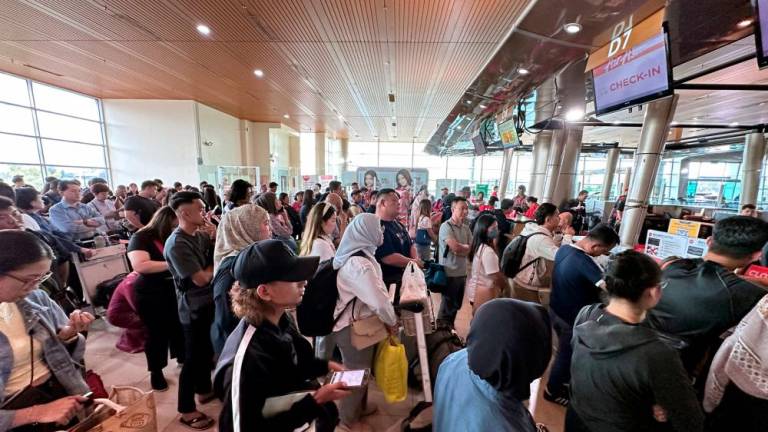PETALING JAYA: The increase in the Overnight Policy Rate (OPR) will indirectly affect price stability as higher interest rates support the ringgit and limit the pass-through effects to overall prices, experts say in the wake of Bank Negara Malaysia’s (BNM) decision to raise the OPR by 25 basis points to 2.00% last week.
“But in any case, we expect fiscal policies to do most of the work through subsidies and price controls to stabilise prices for now,” MARC Ratings Bhd chief economist Firdaos Rosli told SunBiz.
Malaysia’s headline inflation moderated to 2.2% during the first quarter of 2022 (Q1’22) from 3.2% in Q4’21 while core inflation increased to 1.7% (Q1’22) from 0.8% (Q4’21), according to Bank Negara Malaysia (BNM). Headline inflation decreased mainly due to the dissipating base effects. Core inflation, however, increased amid improving demand and a high-cost environment.
For the rest of the year, core inflation is expected to average between 2.0% and 3.0%, reflecting the improvement in economic activity and continued cost pressures. The inflation outlook continues to be subject to global commodity price developments, as well as domestic policy measures on administered prices.
While price increases were more broad-based, Consumer Price Index (CPI) items recording above-average inflation were largely driven by supply factors.
Firdaos said at the current rate of 2.00%, the OPR will not really affect spending and consumption despite higher prices as a better economy will increase discretionary and non-essential spending.
BNM has said that targeted repayment assistance is still available for the more vulnerable segment of the rakyat who might be affected by the hike in interest rates.
“I think the overall impact on the more vulnerable rakyat is still manageable since the Malaysian economy continues to trend in a low-interest rate environment,” Firdaos said.
On what the rakyat can do due to cost-push inflation, he said it differs from person to person. He delineated that there is no point in saving when the interest rate is not that high. Firdaos instead suggested that people make investments; and that they can invest in themselves to increase their skills so they can earn better wages.
“Saving only makes sense if you save against the inflation rate. If it (interest rate) is less than the inflation rate, your money is actually diluting.”
BNM governor Tan Sri Nor Shamsiah Mohd Yunus, however, suggested that the higher OPR may encourage Malaysians save more and rebuild their savings that have been impacted during the Covid-19 pandemic.
Firdaos said: “We foresee that the unemployment rate will continue to trend lower amid a more expansive economic reopening since January this year. This scenario would reduce the probability of job losses, but the degree of decline in the unemployment rate would depend on how quickly the services sector performs in the coming months.”
The unemployment rate is a factor that could predict whether it is probable for the BNM to increase OPR rate again in the next half of the year as well as the country’s economic growth, he said. However, he also noted that getting a pay raise is trickier to assess as it is contingent upon the bargaining power between workers and employers.
Firdaos agreed with the central bank monetary policy committee’s assessment that the OPR must go up once the signposts to solid growth become clearer. It appears that domestic demand performed much better than anticipated amid higher government spending.
BNM said the increase in the OPR is to recalibrate Malaysia’s monetary policy and to avoid having to be aggressive down the road which is the case with other central banks.
Additionally, the economist said a weaker ringgit is expected due to external factors including the strengthening of the US dollar.
“But we are living in a very strange time right now. Because US dollar and oil price has decoupled. In the past, when oil prices go up, the US dollar would weaken. But now the US dollar is strong when the oil price is high.”
UOB Research noted: “While BNM’s findings suggest that household’s inflation expectations remain anchored in Q1’22, our channel checks informed that prices of various household items may adjust higher in coming months as new stocks are replenished at higher cost and also to account for the increase in wages.”
Following BNM’s decision to raise the OPR last week, UOB continues to expect another 25bps increase in Q3’22. This implies a total 50bps hike this year to bring the OPR to 2.25% by year-end.
Fitch Solutions, too, continues to expect BNM to raise the OPR to 2.25% in 2022, as the central bank seeks to ensure the stability of the ringgit and maintain its real interest rate differential over that the US.
“Indeed, while inflation appears to be well contained by government subsidies and price controls for key essential items and fuel, the ringgit has depreciated by 4.1% since April and further losses could feed through to higher imported inflation, lowering the purchasing power of consumers. We continue to see upside risks if major central banks around the world were to tighten monetary policy even quicker than we currently expect due to growing underlying inflationary pressures,” said Fitch.
The data and research agency has revised down its average inflation forecast for 2022 to 2.8% y-o-y, from 3.3% previously and 2.5% in 2021. Inflation came in at just 2.2% y-o-y in March, holding steady from February and slightly down from 2.3% y-o-y in January, despite rising commodity prices over that period.
“This is likely due to the price controls and subsidies implemented by the government, which we expect to keep headline inflation relatively subdued over the rest of 2022.
“Although inflation may not present a very strong case for further interest rate hikes, we believe BNM will still raise interest rates by an additional 25bps over the coming months to support the ringgit. The ringgit has weakened by 5.1% against the US dollar since the beginning of the year and 4.1% just between April 1 and May 11, to trade at RM4.38/USD on May 11. We attribute this weakness largely to the much more hawkish stance of the US Federal Reserve since March as well as rising global financial market volatility,” Fitch said.













